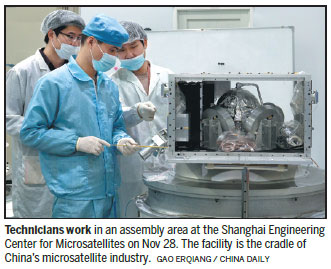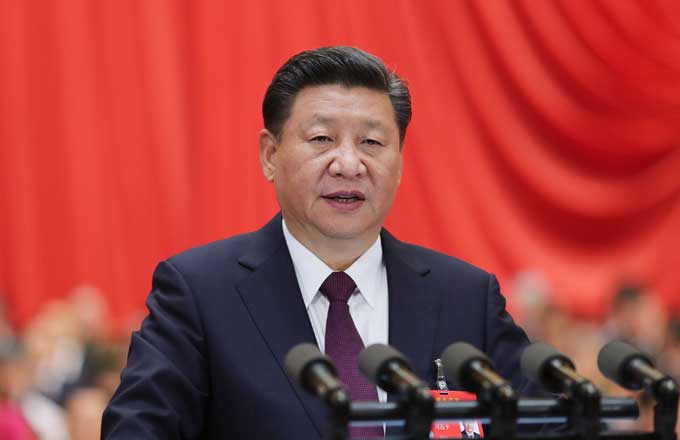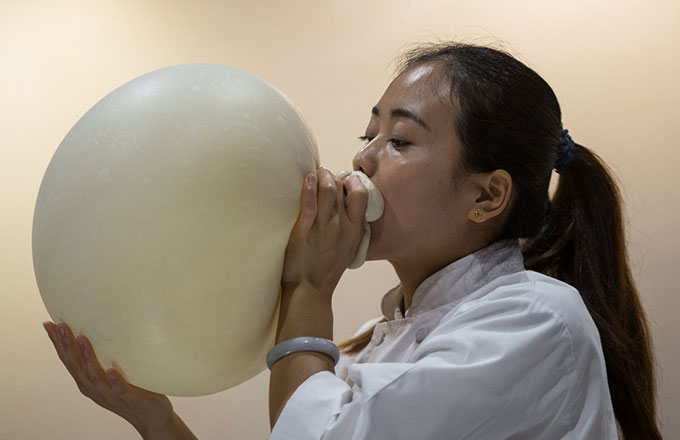Pudong sets the pace for high-tech growth
The saying goes among retirees in the Caoyang neighborhood of Shanghai's Putuo district that the highest yield per unit of land in Pudong is always the next plot of wasteland to be constructed, because you would never know the limit of human wisdom.
Caoyang, constructed in 1951, was China's first "new village for workers" - a residential community of matchbox apartment buildings designed by architects from the Soviet Union in the 1950s. Only those awarded honorary titles, such as "model laborer" and "advanced worker", were allowed to live in the apartments, in which two homes shared one toilet while most locals used closestools.
Pudong, or east of the Huangpu River, had been a synonym of countryside for these senior locals since Puxi, or west of the river - which divided Shanghai into two parts - was occupied by Western colonialists in the mid-19th century, becoming a forest of foreign settlements.
China started developing Pudong in 1993. It now contributes one-third of Shanghai's GDP but houses onefifth of its population. The skyline marked by the high-rises has become a source of pride for the city.
Though constantly renovated, Caoyang, once a high-end community, is now dwarfed by skyscrapers clad in flashy glass curtains in Pudong.
The old workers in Puxi were expert in traditional manufacturing and the workers in Pudong manufacture satellites, airplanes and engines, said Pei Lei, a self-employed thirty-something electronic engineer in Pudong from Ma'anshan, Anhui province.
"The Huangpu River seems like a boundary marking the old days and the future of Shanghai's industrial development," Pei said.

Pei is one of the young people striving for his dreams in Pudong, which attracts young skilled workers through a series of favorable policies, provided housing, tax cuts and cash subsidies. The aging rate in Caoyang is nearly 35 percent, double that of Pudong.
"I am proud to work in the first matrix of China's largest and the world's third-largest synchrotron radiation light source," said He You, a researcher in Shanghai Synchrotron Radiation Facility, a State high-tech project in Pudong.
The luminance of the light source is 1,000 times that of common X-rays, making it possible to discern the structure of even a virus and a microstructure of some materials, He said, explaining the facility as simply as he could.
"It is like a super microscope, making some difficult problems easy. Scientists from across the country have made more than 15,000 trips to do experiments with the equipment. I am glad my work helps them," He said.
"The average age of our researchers is 31. We have made 25 microsatellites since the center was established 14 years ago, and all of them have successfully been sent to space, and worked well," said Yu Yingjie, director of Shanghai Engineering Center for Microsatellites.
The center is working on 30 microsatellites in the fields of dark matter research, global positioning, atmospheric pollution and climate change research, and quantum communication.
"All of our satellites are groundbreaking in their respective fields. Our aim is to seek all-around innovations in materials, devices and assembly units, so as to promote the upgrading of the whole industrial chain related to the satellite engineering," Yu added.
Also in the industrial zone is Shanghai PartnerX Robot Co, the world first educational robot research and development enterprise. Xu Jiping, 23, an employee of the company, said: "I dream of making a robot that can help the people, and the company provides me with a platform to realize my dream. The company can make all the parts and devices needed for my dream, from electrical machinery to steering engine and controller."
Half a year after graduating from college, Xu has had his own team, and he believes artificial intelligence represents the future of robots.
Shanghai, with its open and healthy business environment, high-quality public services and solid industrial foundation, attracts young talent like magnets, said Zhang Weiwei, director of the China Institute of Fudan University in Shanghai.
"The emerging strategic industries account for 26.7 percent of the total industrial output in the city. The inflow of young talent, one of the most valuable assets, lays a solid foundation for Shanghai to boost further development of these industries."




























